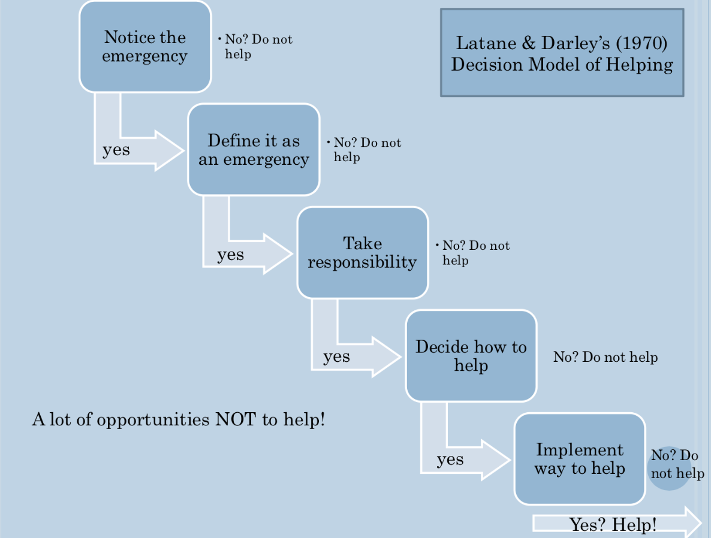Prosocial behaviour
1/8
Earn XP
Description and Tags
16 - 20
Name | Mastery | Learn | Test | Matching | Spaced |
|---|
No study sessions yet.
9 Terms
What is prosocial behaviour
positive social consequences, voluntary
helping behaviour: intentional
altruism: selfless, no reward
What is empathy and its role
empathy is an emotional response to someone else’s distress
helping involves identifying what someone else is going through
Describe the bystander calculus model (Piliavin et al, 1981)
Physiological response + cognitive processes = helping behaviour
Physiological arousal
High arousal = more likely to help
Labelling the arousal
Empathy? Distress?
Evaluating the consequences
Time & effort
How to use the Bystander calculus model for the Kitty Genovese story
think about:
physiological arousal level
label the arousal
evaluate potential consequences
costs of not helping?
Describe Latane & Darley’s (1970) Decision model of helping
Notice the emergency,
No? Do not help, if yes then move on to number 2
Define it as an emergency
No? Do not help, if yes then move on to number 3
Take responsibility
No? Do not help, if yes then move on to number 4
Decide how to help
No? Do not help, if yes then move on to number 5
Implement way to help
No? Do not help, if yes then help

What are the 3 key processes that contribute to bystander apathy
diffusion of responsibility - if alone we accept responsibility
audience inhibition - don’t want to over-react and look silly
social influence - if others are passive our assessment is ‘this is not an emergency’
Women are more empathetic than men but:
social role theory = women are less likely to initiate interactions with (male) strangers
GRIP theory = Croft et al. (2021), gender roles inhibit prosocial behaviour
How can helping be increased?
raise awareness of barriers to helping
saw a lecture about bystander effect: ~45% helped later
sae an unrelated lecture: <25% helped later